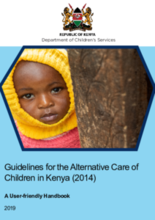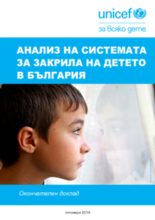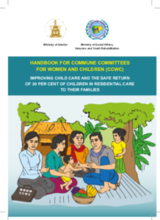Displaying 441 - 450 of 1787
This report highlights more than 70 child welfare agencies across the United States that partnered with the Human Rights Campaign Foundation’s All Children - All Families project to improve the services they provide to the LGBTQ community, including children in foster care and prospective foster and adoptive parents.
Drawing on the best available data from around the world, this Report proposes a comprehensive agenda for key policy actors – including gender equality advocates, national governments and international agencies – to make human rights a reality for all women and girls, no matter what kind of family they live in.
This paper examines the recordkeeping governance requirements of the childhood out-of-home Care sector in Australia, with critical interlaced identity, memory, cultural and accountability needs.
This handbook is a key tool for supporting care reform in Kenya, promoting family-based alternative care for children, and moving away from institutional care.
This research is based on a stock-taking of the current situation. It is based on a comprehensive literature review and a genuine primary research with service users as well as policy makers, service providers, children and families.
The study examines from a comparative point of view some theoretical issues of the substantive conditions of adoption both in Romania and in the Republic of Moldova as they are regulated by the specific laws.
This handbook highlights the role commune committees for women and children (CCWCs) can play in support of implementing the Action Plan for improving child care, which is being carried out in five priority provinces in Cambodia. The Action Plan intends to safely return 30 per cent of children in residential care to their families by the end of 2018, as well as establish effective preventive and gatekeeping mechanisms to prevent unnecessary family separation. This handbook is useful in strengthening CCWCs’ roles and enhancing their knowledge and capacity to protect children in their communes.
This report, which is also the fifth in the series, reflects on how children and the realisation of their rights continue to challenge our conscience even today.
This study identified children born to mothers in foster care and documented Child Protective Service (CPS) involvement among children.
This paper presents a qualitative analysis of front‐line practices regarding emergency removals in Finnish and Irish child protection.






